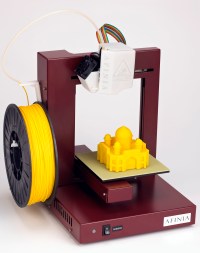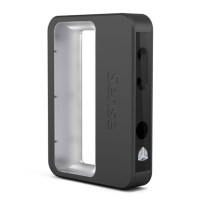Movement tracking could get a whole lot more granular if the New York-based startup behind this wearable sensor gets its way. Notch, currently being shown off in prototype form on Kickstarter, is a wearable sensor designed to be concealed within clothing at natural hinge points around the body to track and capture specific body movements – sending that data back to a companion (iOS) app for tracking and review.
Right now, there’s no shortage of wearable tech aimed at fitness and activity use-cases, whether it’s Fitbit or Jawbone’s UP or Nike’s Fuelband to name a few. Easily enough activity tracker bangles to fill the average-sized forearm. And that’s before you get started on smartwatches. But fewer Bluetooth sensor-makers are aiming to capture precise body movements – likely because on the surface it seems a smaller, more niche use-case. Something for dancers, athletes and freerunners to get excited about, perhaps.
But then again, a wearable sensor – or more accurately a network of sensors if you want to capture a whole concert of body movements using Notch – that can record precise, physical movements and deliver localised feedback to an arm or leg, has potential to be useful in a variety of ways. As a warning system against slouching when sitting, perhaps (a la the LUMOback). Or a stress monitor, based on how much nervous gesticulating you’re doing at work.
Notch is designed to both capture movement data (either continuously or on demand – recording and pausing can be controlled by tapping on an individual sensor), and to output haptic feedback, via tiny vibration motors, meaning it can be used for motion-triggered notifications. The sensors use inertial measurement units to capture body motion, and Bluetooth Low Energy to send recorded data to the Notch app.
For starters, Notch’s own app will offer the ability to set up the individual mobiles, record movements, collect data on those movements, replay the movements as 3D visualisations, and download the data in XYZ format, say its makers. But they are also planning to release an API to allow third party developers to build out additional use-cases for Notch. So if they can excite enough developers, they could end up with some pretty off the wall motion trigger-tech scenarios.

“Haptic feedback basically extends Notch into one more dimension, making Notch not just an input device (that gets movement) but also an output device. We are definitely going to include haptic feedback functionality into our app. Triggers related to movement and based on timers are what we are deciding on right now. We call this kind of functionality ‘personal coach’, but it would be most exciting for us to see what use cases for haptic feedback developers will come up with,” Stepan Boltalin, Notch’s founder & CEO, told TechCrunch.
“We have already been getting interest from people in various fields: martial artists (tracking the speed / power of punching), climbers, skydivers, animators. We believe that movement is a very broad field, so we plan to offer use-case specific apps gradually (as well as encourage developers to take advantage of our data),” he added, discussing more broadly some potential use-cases for Notch. ”We will release a companion app, but are also researching which particular field of activity to focus on for the first use case specific app.”
Each Notch sensor is 1.3×1.2×0.31inches (30x33x8mm), and weighs less than 0.35oz (10g). They’re designed to be charged via standard microUSB and will run for 3+ days “normal usage”. The sensors are designed to snap onto clothing via standard male sewing snaps. The startup is also offering some custom clothing – including button-up shirts and casual tees – with built in connector pockets for Notch.
Early Kickstarter backers can bag one Notch sensor for $49, with various other pledge levels up for grabs. But if you want the full body capture option it’s considerably more pricey – circa $360 for eight modules, to allow for motion capture of wrists, elbows, head, torso, feet. So that’s clearly going to remain niche.
The startup is also seeking a rather sizeable $100,000 to make Notch fly – with sub-$5,000 raised so far, and 43 days of their campaign left to run. If they hit their funding target they’re aiming to ship Notch to backers next June.







 First, I’d recommend the
First, I’d recommend the  Being able to print in both materials is vitally important if you want to make high quality items and each material has its different qualities. For example, you can print translucent objects with PLA but not ABS and ABS objects are far more resilient than PLA objects.
Being able to print in both materials is vitally important if you want to make high quality items and each material has its different qualities. For example, you can print translucent objects with PLA but not ABS and ABS objects are far more resilient than PLA objects.
 One of my favorite products of 2013 was the
One of my favorite products of 2013 was the 